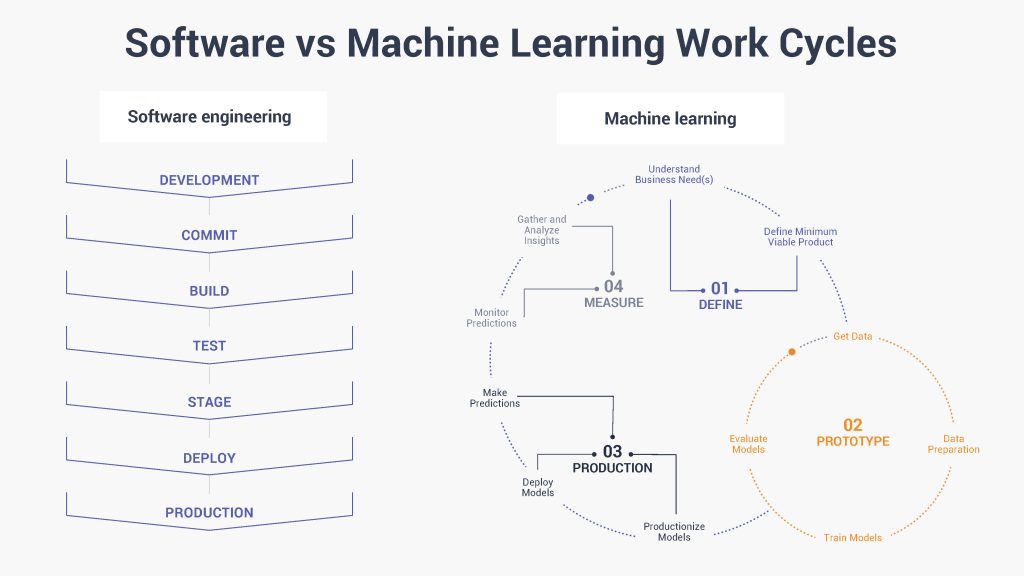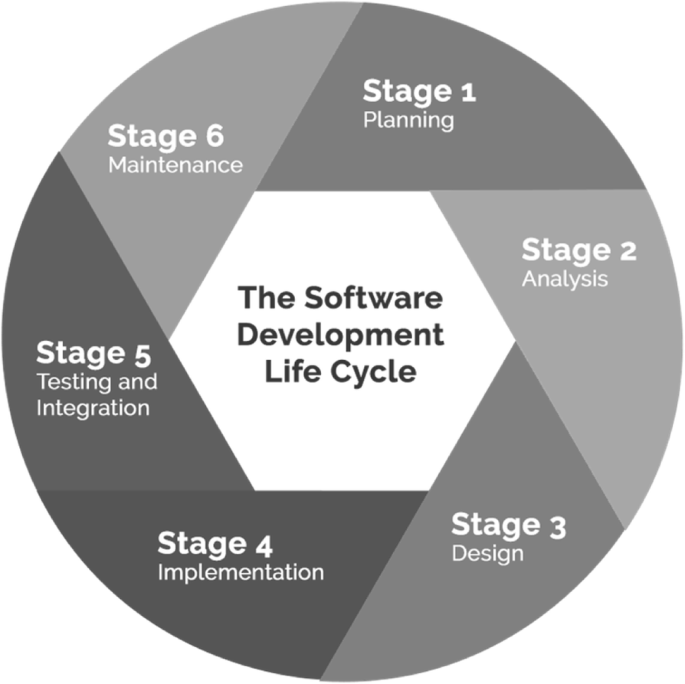All Categories
Featured
Table of Contents
- – Generative Ai Training Things To Know Before Y...
- – All About How To Become A Machine Learning Eng...
- – 3 Simple Techniques For Machine Learning Cras...
- – How Machine Learning can Save You Time, Stres...
- – 3 Simple Techniques For How To Become A Mach...
- – The Single Strategy To Use For Machine Learn...
- – Get This Report about Artificial Intelligenc...
Some individuals believe that that's disloyalty. Well, that's my whole career. If someone else did it, I'm mosting likely to use what that person did. The lesson is putting that aside. I'm compeling myself to analyze the feasible services. It's more regarding taking in the web content and attempting to use those ideas and less about finding a collection that does the job or finding somebody else that coded it.
Dig a little bit deeper in the math at the start, just so I can construct that structure. Santiago: Ultimately, lesson number seven. I do not think that you have to understand the nuts and screws of every algorithm prior to you utilize it.
I would have to go and examine back to actually get a far better intuition. That doesn't mean that I can not address things utilizing neural networks? It goes back to our arranging example I think that's simply bullshit recommendations.
As a designer, I have actually dealt with many, many systems and I've used numerous, lots of things that I do not understand the nuts and screws of just how it works, despite the fact that I recognize the effect that they have. That's the final lesson on that string. Alexey: The amusing thing is when I think about all these libraries like Scikit-Learn the formulas they utilize inside to carry out, for example, logistic regression or something else, are not the exact same as the formulas we study in device learning courses.
Generative Ai Training Things To Know Before You Get This
Also if we attempted to find out to obtain all these basics of device knowing, at the end, the algorithms that these collections make use of are various. Santiago: Yeah, absolutely. I think we require a great deal more materialism in the sector.

Incidentally, there are two different paths. I generally speak with those that want to function in the industry that wish to have their impact there. There is a course for researchers which is totally various. I do not attempt to mention that since I don't know.
Right there outside, in the industry, pragmatism goes a lengthy means for sure. Santiago: There you go, yeah. Alexey: It is a good motivational speech.
All About How To Become A Machine Learning Engineer
One of the points I desired to ask you. Initially, allow's cover a couple of points. Alexey: Let's start with core tools and structures that you need to learn to really transition.
I recognize Java. I understand SQL. I understand exactly how to use Git. I understand Celebration. Maybe I know Docker. All these things. And I find out about artificial intelligence, it appears like a cool thing. So, what are the core devices and frameworks? Yes, I viewed this video clip and I get convinced that I don't require to obtain deep into math.
Santiago: Yeah, absolutely. I think, number one, you should start finding out a little bit of Python. Since you currently recognize Java, I don't assume it's going to be a significant transition for you.
Not because Python is the exact same as Java, however in a week, you're gon na get a lot of the distinctions there. Santiago: After that you get specific core tools that are going to be made use of throughout your whole profession.
3 Simple Techniques For Machine Learning Crash Course For Beginners
That's a library on Pandas for data adjustment. And Matplotlib and Seaborn and Plotly. Those 3, or among those three, for charting and presenting graphics. You get SciKit Learn for the collection of device knowing formulas. Those are devices that you're mosting likely to need to be making use of. I do not recommend just going and discovering them out of the blue.
Take one of those courses that are going to start introducing you to some problems and to some core ideas of maker learning. I don't keep in mind the name, but if you go to Kaggle, they have tutorials there for free.
What's great regarding it is that the only requirement for you is to understand Python. They're mosting likely to offer a trouble and tell you just how to use choice trees to fix that details issue. I believe that process is extremely effective, since you go from no maker learning history, to comprehending what the issue is and why you can not address it with what you understand now, which is straight software application engineering practices.
How Machine Learning can Save You Time, Stress, and Money.
On the various other hand, ML designers focus on building and deploying device discovering versions. They focus on training models with data to make predictions or automate jobs. While there is overlap, AI engineers handle even more varied AI applications, while ML designers have a narrower concentrate on artificial intelligence algorithms and their functional execution.

Equipment discovering designers focus on developing and releasing equipment discovering designs into production systems. On the other hand, data scientists have a more comprehensive duty that consists of information collection, cleansing, expedition, and structure designs.
As organizations significantly adopt AI and maker understanding modern technologies, the need for competent specialists expands. Device understanding designers work on advanced projects, add to technology, and have competitive salaries.
ML is fundamentally various from standard software program advancement as it focuses on mentor computer systems to learn from data, rather than shows specific policies that are carried out systematically. Uncertainty of outcomes: You are probably made use of to creating code with foreseeable outputs, whether your function runs as soon as or a thousand times. In ML, nonetheless, the results are much less specific.

Pre-training and fine-tuning: Exactly how these designs are trained on large datasets and then fine-tuned for certain jobs. Applications of LLMs: Such as text generation, sentiment analysis and info search and retrieval. Papers like "Interest is All You Required" by Vaswani et al., which presented transformers. On the internet tutorials and programs focusing on NLP and transformers, such as the Hugging Face program on transformers.
3 Simple Techniques For How To Become A Machine Learning Engineer
The capacity to manage codebases, combine modifications, and deal with problems is equally as vital in ML development as it remains in traditional software program projects. The abilities created in debugging and screening software applications are highly transferable. While the context could transform from debugging application logic to recognizing problems in information processing or design training the underlying concepts of organized examination, hypothesis testing, and iterative refinement are the same.
Maker learning, at its core, is greatly reliant on stats and possibility concept. These are important for recognizing just how algorithms discover from data, make forecasts, and assess their performance.
For those interested in LLMs, a thorough understanding of deep understanding styles is helpful. This includes not just the technicians of semantic networks yet likewise the style of certain versions for different use situations, like CNNs (Convolutional Neural Networks) for image processing and RNNs (Frequent Neural Networks) and transformers for consecutive data and all-natural language processing.
You should understand these problems and find out strategies for determining, mitigating, and communicating concerning bias in ML versions. This consists of the possible effect of automated decisions and the moral ramifications. Many models, particularly LLMs, call for significant computational resources that are frequently supplied by cloud platforms like AWS, Google Cloud, and Azure.
Structure these abilities will not just assist in an effective change right into ML however likewise make sure that designers can add properly and responsibly to the innovation of this vibrant field. Theory is important, however nothing defeats hands-on experience. Beginning working with jobs that allow you to apply what you've learned in a sensible context.
Develop your projects: Start with basic applications, such as a chatbot or a text summarization device, and gradually boost complexity. The area of ML and LLMs is quickly advancing, with brand-new breakthroughs and innovations emerging on a regular basis.
The Single Strategy To Use For Machine Learning Devops Engineer
Join neighborhoods and forums, such as Reddit's r/MachineLearning or neighborhood Slack channels, to discuss ideas and get guidance. Go to workshops, meetups, and seminars to link with various other professionals in the area. Contribute to open-source tasks or compose post regarding your discovering journey and tasks. As you get know-how, start looking for possibilities to incorporate ML and LLMs into your work, or seek new duties concentrated on these innovations.

Vectors, matrices, and their duty in ML formulas. Terms like version, dataset, features, tags, training, inference, and validation. Information collection, preprocessing strategies, design training, examination procedures, and deployment factors to consider.
Decision Trees and Random Forests: User-friendly and interpretable models. Support Vector Machines: Maximum margin classification. Matching problem kinds with appropriate designs. Balancing performance and intricacy. Standard framework of neural networks: neurons, layers, activation features. Layered calculation and ahead proliferation. Feedforward Networks, Convolutional Neural Networks (CNNs), Frequent Neural Networks (RNNs). Image acknowledgment, sequence forecast, and time-series evaluation.
Continual Integration/Continuous Implementation (CI/CD) for ML process. Design surveillance, versioning, and efficiency monitoring. Finding and dealing with adjustments in model efficiency over time.
Get This Report about Artificial Intelligence Software Development

You'll be presented to three of the most appropriate elements of the AI/ML self-control; monitored knowing, neural networks, and deep learning. You'll realize the distinctions in between conventional shows and equipment understanding by hands-on advancement in monitored learning before building out intricate distributed applications with neural networks.
This course works as a guide to equipment lear ... Show Much more.
Table of Contents
- – Generative Ai Training Things To Know Before Y...
- – All About How To Become A Machine Learning Eng...
- – 3 Simple Techniques For Machine Learning Cras...
- – How Machine Learning can Save You Time, Stres...
- – 3 Simple Techniques For How To Become A Mach...
- – The Single Strategy To Use For Machine Learn...
- – Get This Report about Artificial Intelligenc...
Latest Posts
How To Ace A Live Coding Technical Interview – A Complete Guide
How To Ace The Faang Software Engineer Hiring Process From Start To Finish
Tech Interview Handbook: A Technical Interview Guide For Busy Engineers
More
Latest Posts
How To Ace A Live Coding Technical Interview – A Complete Guide
How To Ace The Faang Software Engineer Hiring Process From Start To Finish
Tech Interview Handbook: A Technical Interview Guide For Busy Engineers